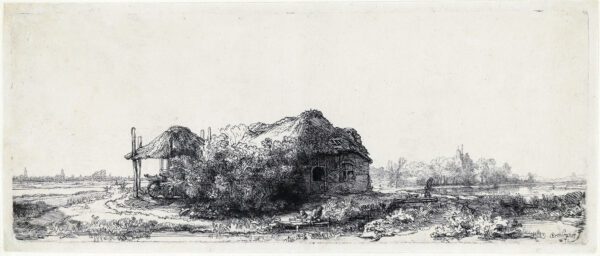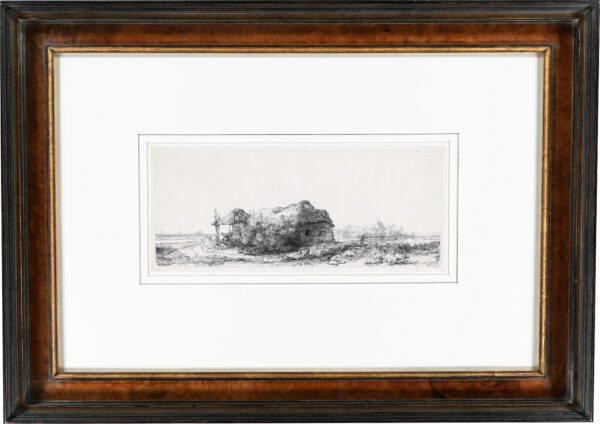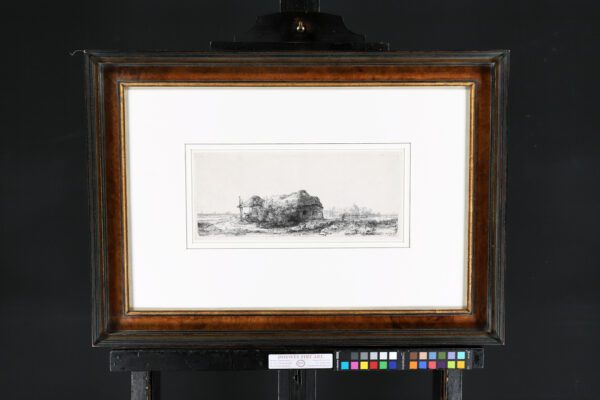“Landscape with Cottages and a Hay Barn: Oblong”, 1641
signed and dated lower right: Rembrandt f 1641
etching with touches of drypoint on laid paper: 13,2 x 32,7 cm;
with small margins on all four sides.
"*" indicates required fields
Notes
During his lifetime, Rembrandt’s extraordinary skills as a printmaker were the main source of his international fame. Unlike his oil paintings, prints travelled light and were relatively cheap. For this reason, they soon became very popular with collectors not only within, but also beyond the borders of the Netherlands.
This large, relatively early landscape print is Rembrandt’s most detailed and arguably finest depiction of the landscape around Amsterdam. In the foreground we see what could be called a ‘portrait’ of an old-fashioned, slightly dilapidated and overgrown farmhouse. The house is inhabited, a woman peaks out of a window and a cart is standing under the hay barn. All this is described in great detail, including two children fishing from a little jetty over the canal, a woman and a dog crossing the bridge, and the low but thick vegetation at the water’s edge.
In the background at right, much more lightly etched, we see some parkland with the roof and tower of a stately house, probably Kostverloren House, just visible above the tree tops, and the river Amstel just in front. In the far distance at left, we see a panorama of the city of Amsterdam on the horizon.
This is in fact an impossible view, as one would not be able to see the city and Kostverloren from this perspective at the same time. (Hinterding, Lugt Collection, no. 177, p. 423) The fact that it is a constructed landscape does increases its charm and deep sentiment for the place, which Rembrandt knew so well and had sketched many times on his walks around Amsterdam.
Literature
Bartsch 225; Hind 177;
The New Hollstein, 2013, no. 199, only state;
Plate not in existence – with Nowell-Usticke (1967):
R – A scarce long landscape
Provenance
- Private collection, USA
- Private collection, The Netherlands




